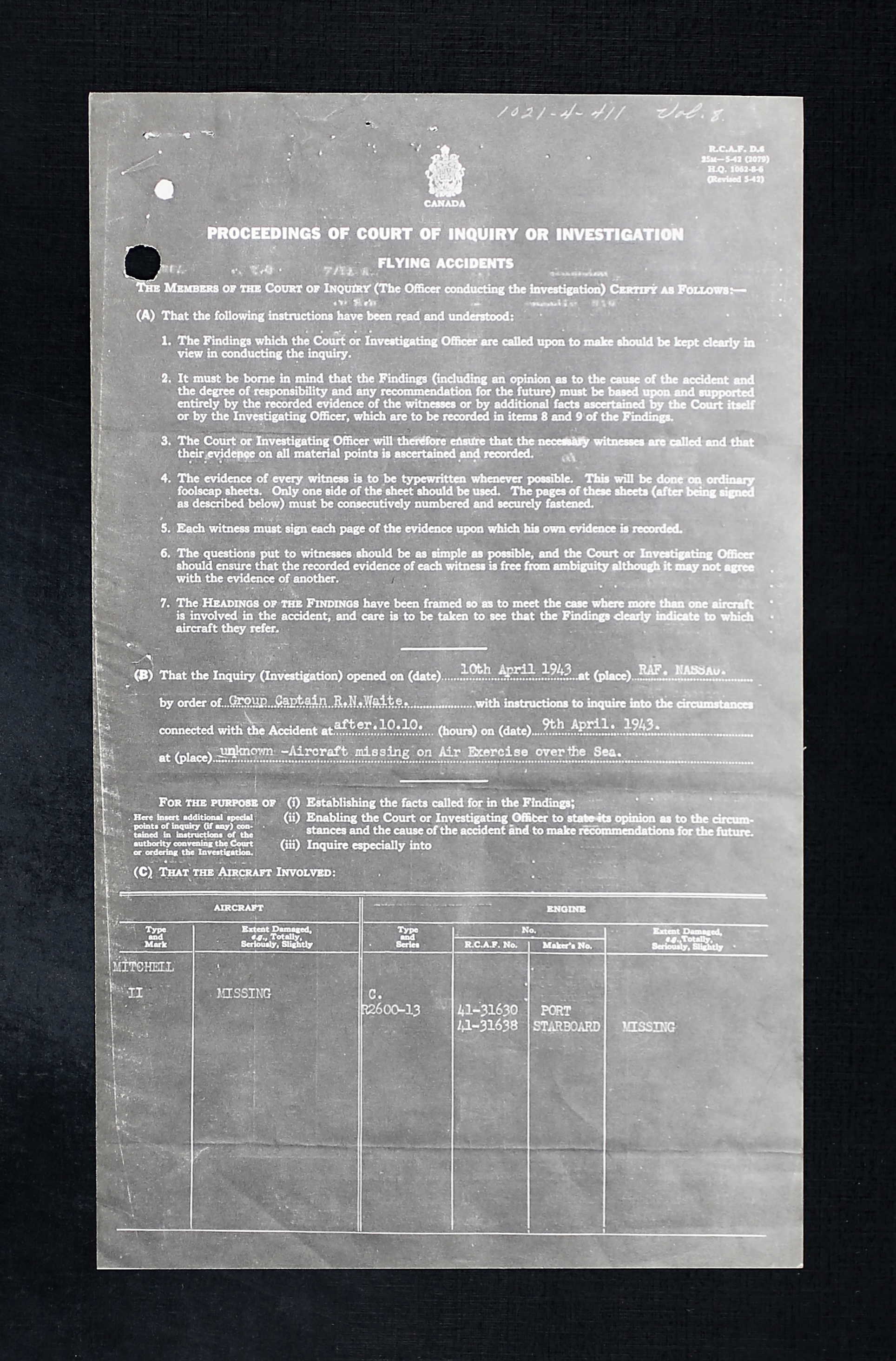
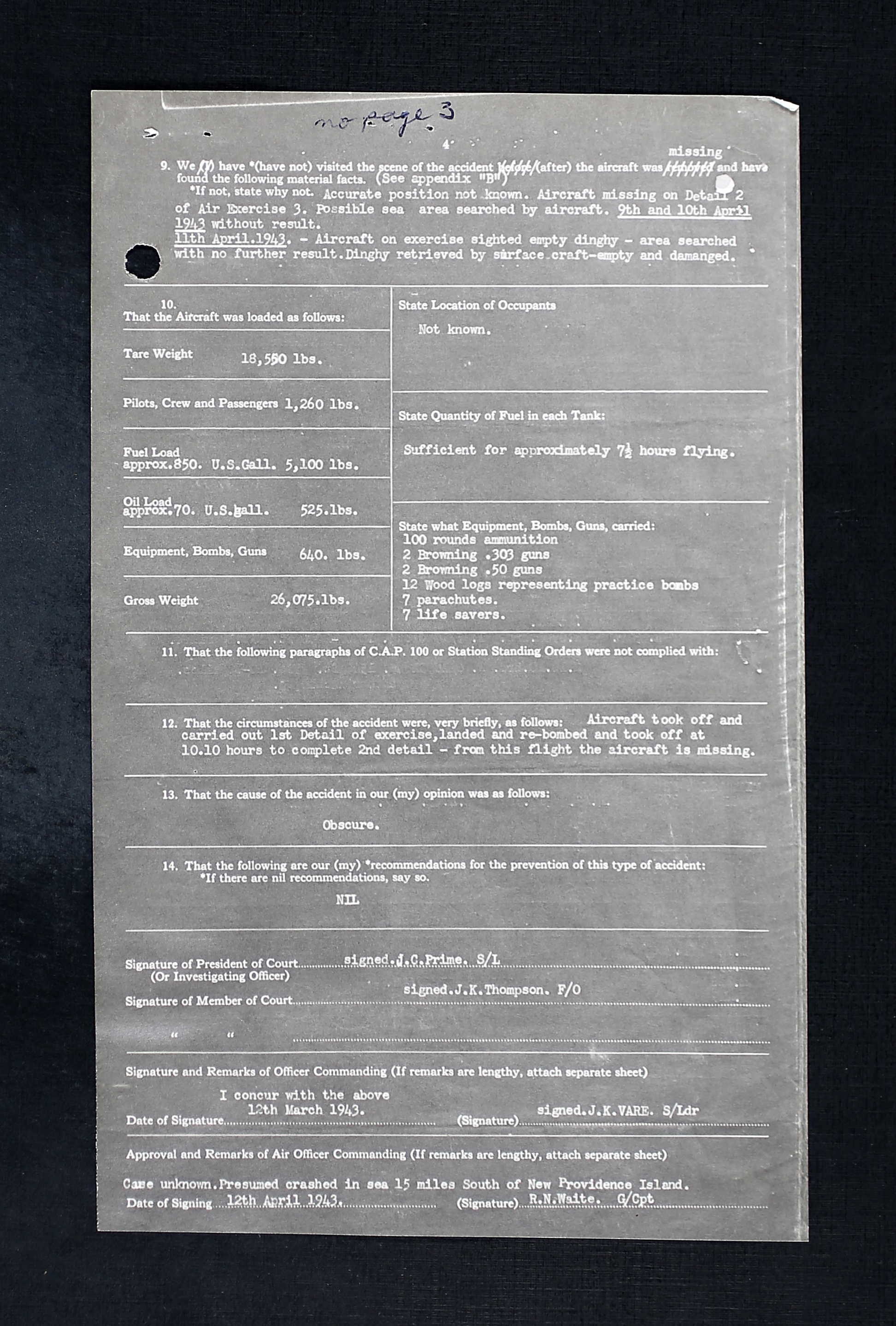
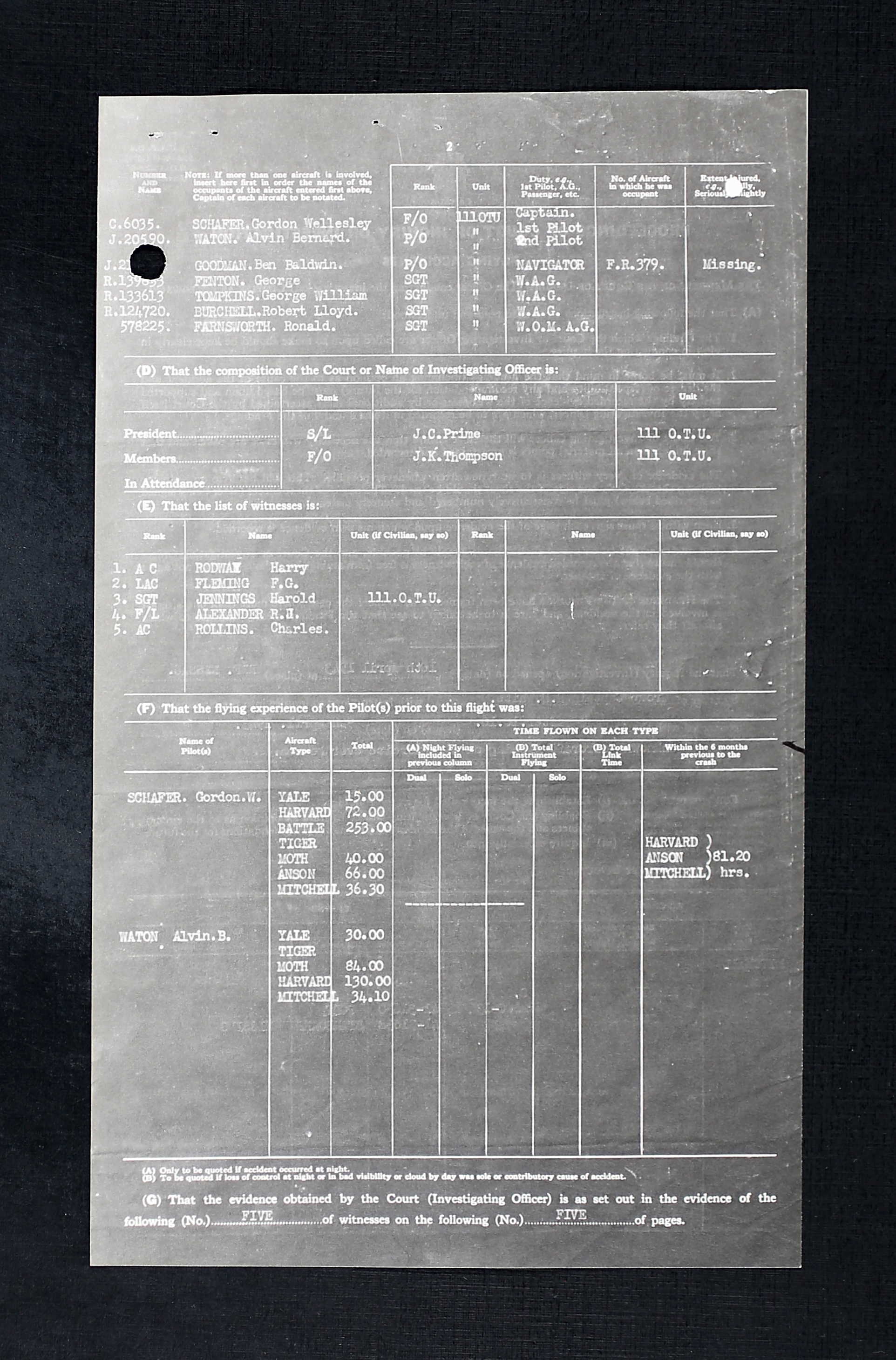
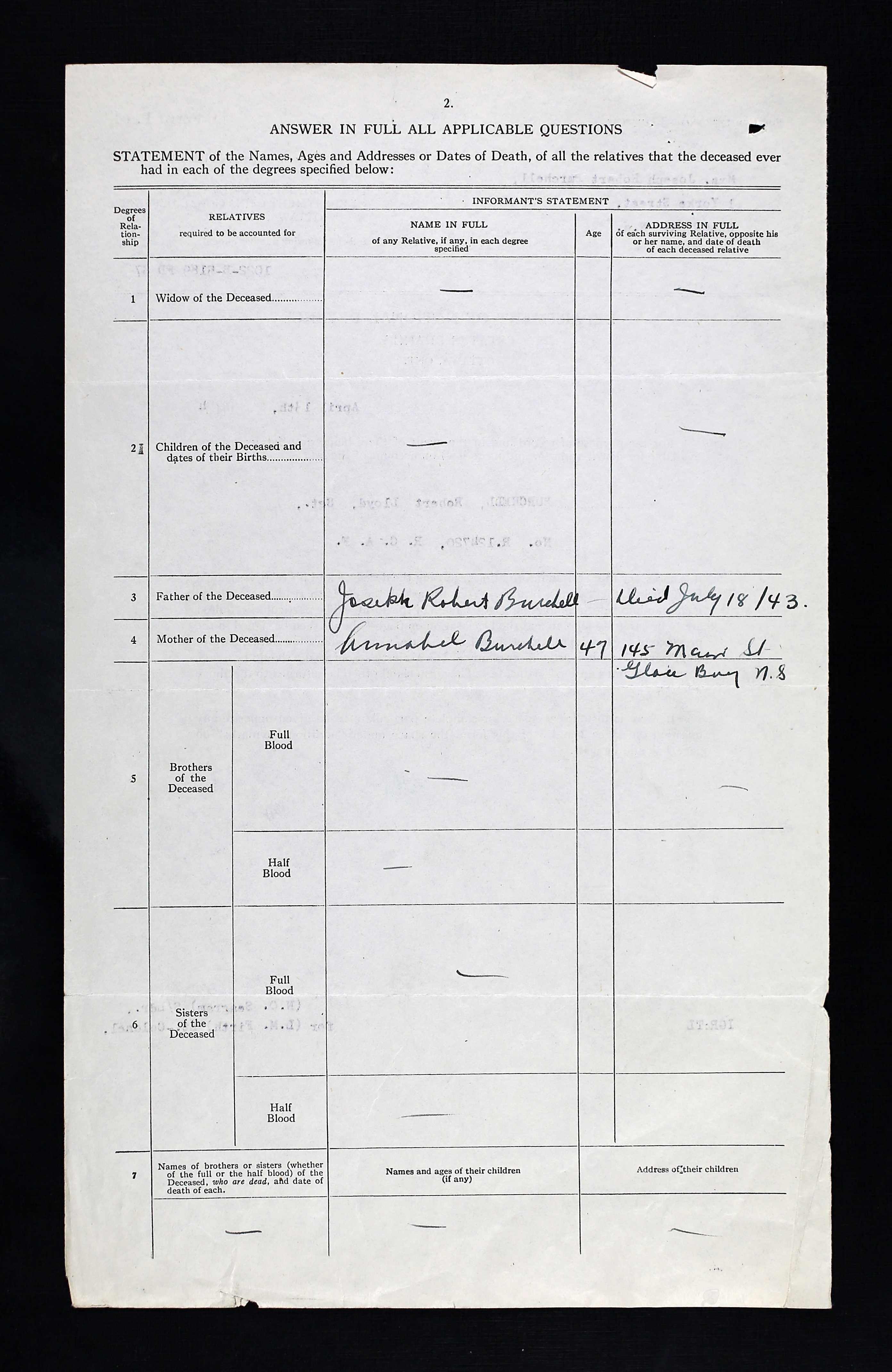
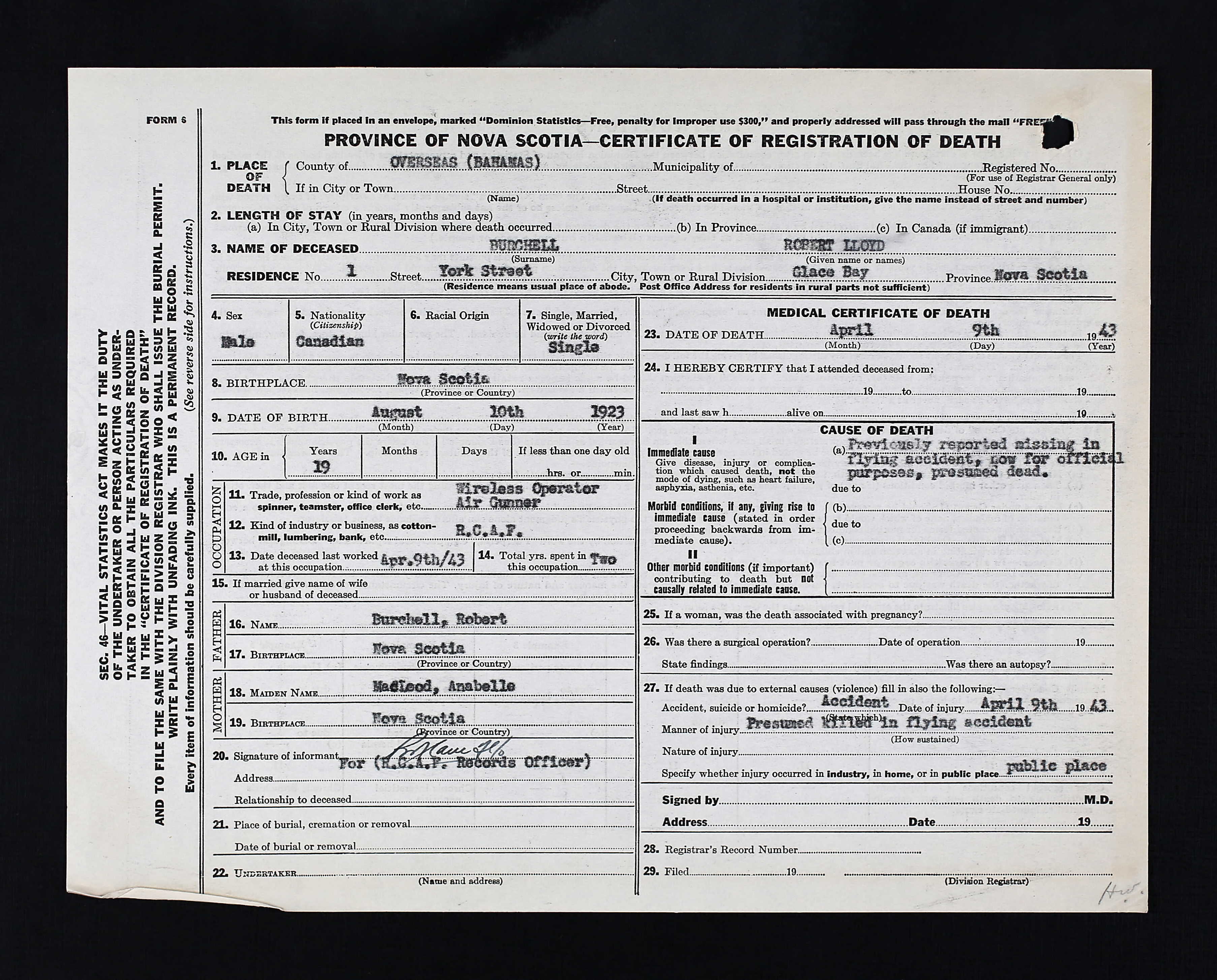
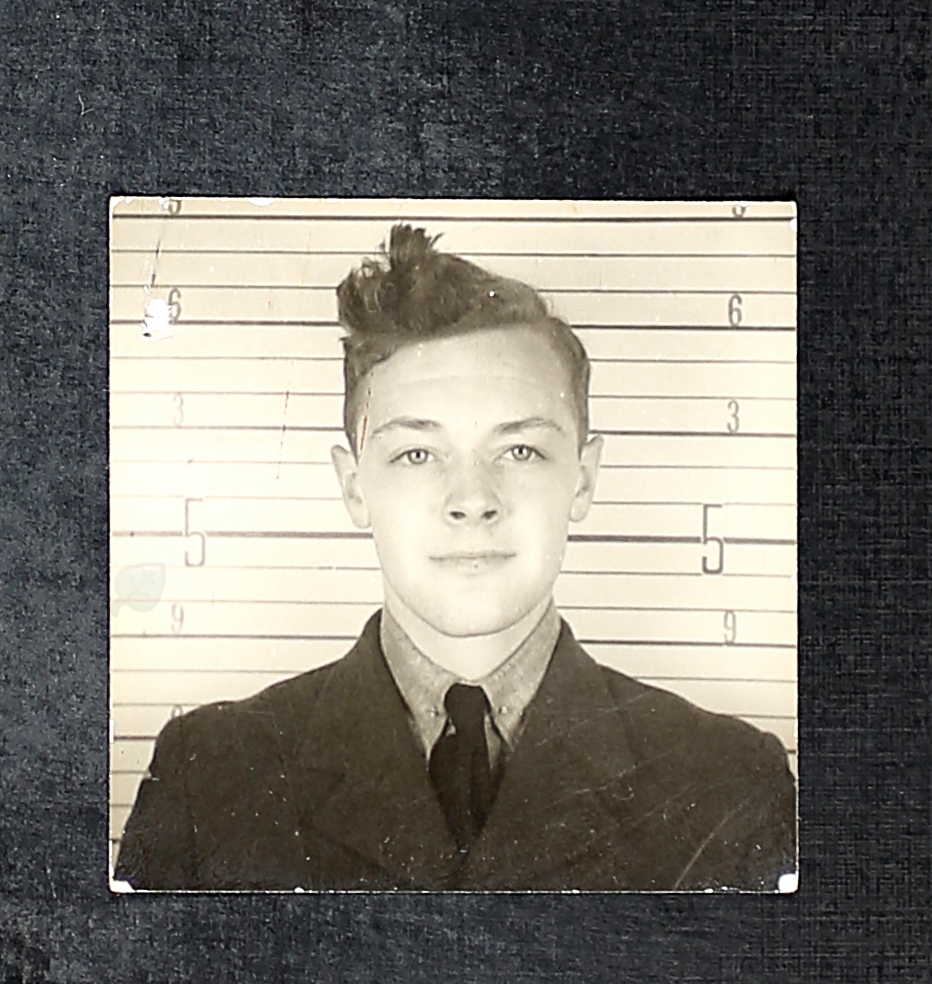
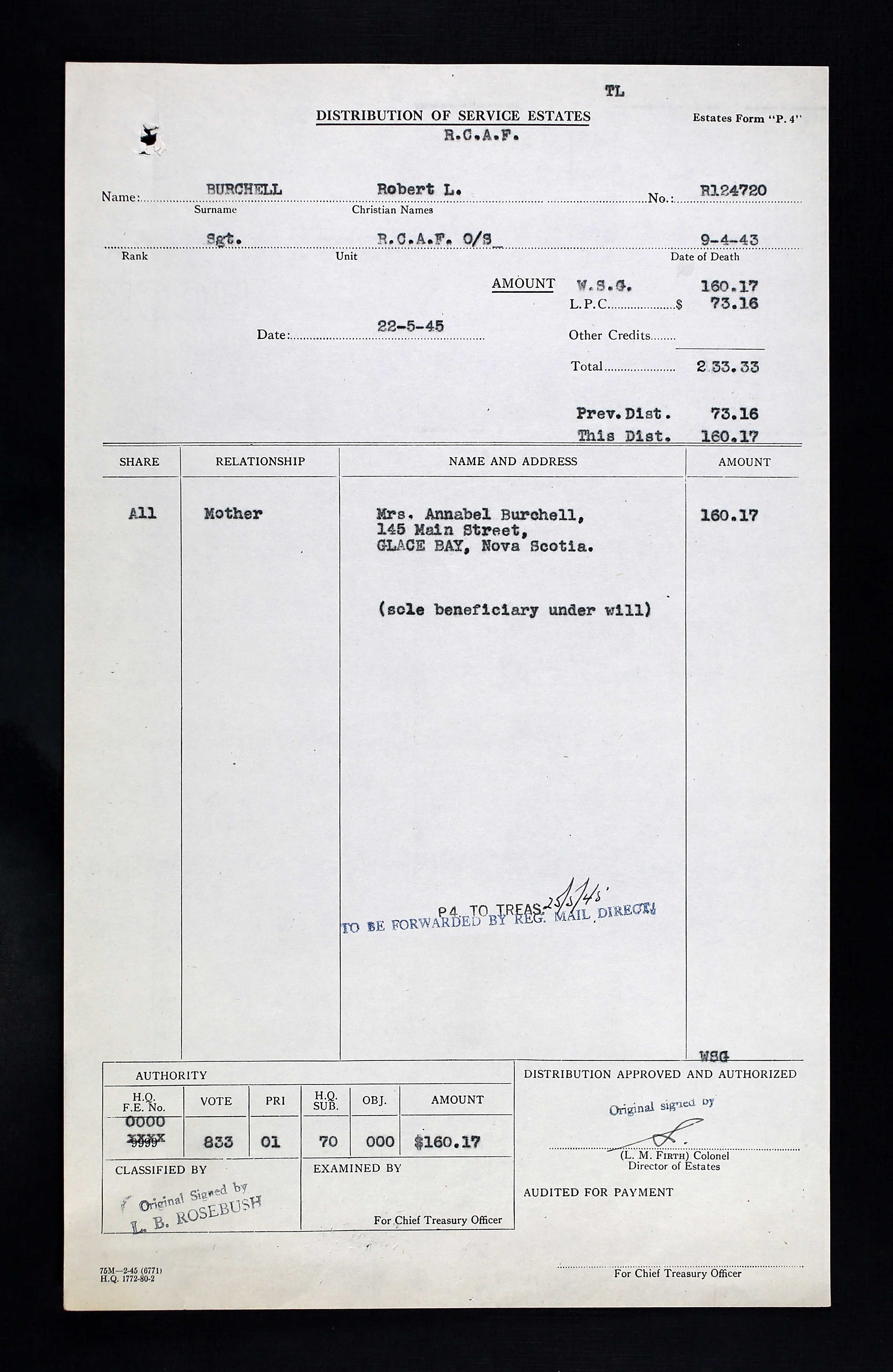
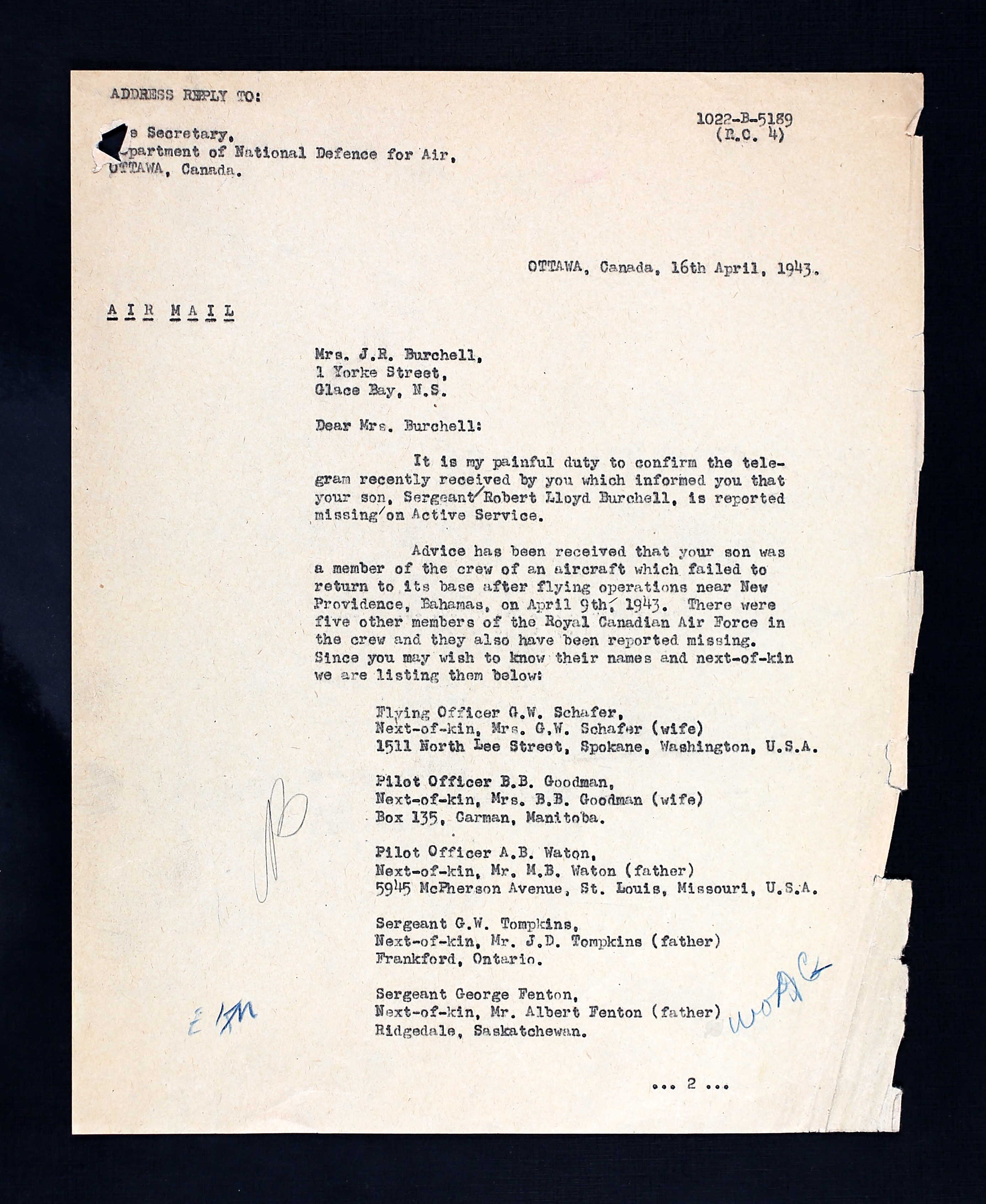

August 10, 1923 - April 9, 1943









Robert Lloyd Burchell was the only child of Joseph Robert Burchell (1890-1943), postmaster, and Annabel (nee MacLeod) Burchell of Glace Bay, Nova Scotia. They were Protestant (United Church). Mr. Burchell died on July 18, 1943.
Robert, with a Grade XI education, worked at Vail’s Laundry and Dry Cleaning as a truck driver in Sydney, Nova Scotia prior to his enlistment in Halifax, Nova Scotia on August 30, 1941 for almost two months. “The work was very uninteresting and became somewhat monotonous. However, it was healthy outside work. My supervisors were excellent men to work for so all in all, I found the job fairly satisfactory. My occupation was on commission basis. My predecessor was earning between $13 and $14 per week. At the time of my resignation, I was earning $16 to $18 per week.” He had driven for four years over 5,000 miles. “I should like to be a fighter pilot as I have gained a good deal of experience at acting quickly from athletics and this characteristic would be more adaptable to fighter planes than bombers.”
He liked shooting and fishing and felt he had a high degree of skill in both. He liked football and basketball. He smoked ten cigarettes a day. Robert liked dancing, reading and listening to the radio. His favourite actor was Gary Cooper and his favourite musician was John Charles Thomas. He belonged to the Hi-Y club, as was its secretary, and the YMCA.
“Athletic physique. Standard mentality.” He stood 5’6” tall, weighing 133 pounds. He had blue eyes and brown hair. A diagonal scar on his lower right thigh was noted. “A good, husky young athletic chap. Rather fast pulse and tense. Alert. Somewhat excitable. Good sturdy boy. Very determined. Very anxious to fly. Eyes OK. Balancing very good. Should be good pilot material. Wants pilot. Night visual acuity quality below average.” Robert had made application for the RCAF at Glace Bay on July 31, 1941 but was not examined at that time as he was ten days under age. He sent in his application ten days later. He “obtained a great deal of information from the RCAF personnel” after he applied. He wanted to be a pilot or observer. He wanted to “aid Canada’s war effort and help keep democracy secure. Interested in flying.”
Robert had looked forward to bush flying in northern Canada had the war not broken out. “I attempted to take flying lessons but was not considered old enough for instruction.” He made between 20 and 30 model airplanes and read the magazine ‘Popular Aviation.’
Robert had $100 in his joint bank account with his mother and $50 in Victory Loan Bonds.
Robert started his journey at No. 1 ITS December 7, 1941 until February 1, 1942. He earned 68&. He was 55th out of 61. “Rather slow, but a plodder and works hard, sincere in his efforts. missed part of course through sickness. Young, should improve with service experience. Obtained 76% in maths. Supp. written due to time lost on Christmas holidays. Link trainer: 30%. Second aircrew recommendation: WOAG.”
He was sent to No. 9 EFTS, St. Catherines, Ontario, from February 16 to April 10, 1942. “Average. Showed promise of becoming average service pilot. Requires more practice in instrument flying. Progress, average 20-hour test, while having attained a passing standard, could not be considered a constant improvement. GROUND TRAINING: 24th out of 33 in class. 66.8%. Flying: average ability. Failed ground navigation supplemental examination. Training discontinued. Conduct and deportment and attitude towards service very good. This airman is still very keen to qualify for another opportunity for training as a service pilot.” Robert’s training was discontinued due to lack of application and failing the navigational supplemental exam. [NOTE: Information from his former high school book published in 1947 has erroneous information.]
Robert was then at KTS, Trenton, Ontario, then sent to No. 4 Wireless School from June 8 to December 21, 1942. “Average. 83.8%. 18th out of 105 in class.” He was then sent to No. 6 BGS from December 28, 1942 to January 25, 1943. “8th out of 30 in class. This airman’s air firing results were above average. This airman is steady and reliable. He is not outstanding in any way, but he has worked hard on his course and seems to have mastered the work. He should make a good NCO.”
On April 9, 1943, Mitchell FR379 took off from Nassau, Bahamas on a training flight that had two exercises, the aircraft and crew completed the first air/sea firing exercise and returned to base for refuel and re-arm. Aircraft took off for the second exercise and went missing, search was conducted, but nothing was found fifteen miles south of New Providence Island, BWI. Cause of crash and location is not known, aircraft and crew missing without a trace. A court of inquiry was called with five witnesses. Cause of accident: Obscure. The aircraft had enough fuel for 7 ½ hours of flying. Two days later, aircraft on training mission spotted a dinghy; surface craft recovered it, empty, and damaged.
Crew: *Pilot: F/O G.W. Schafer, C/6035, RCAF, Spokane, Washington *Pilot: P/O A.B. Waton, J/20590, RCAF, St. Louis, Missouri, U.S.A. *Nav: P/O B.B. Goodman, J/21746, RCAF, Carman, Manitoba *Wop/Gnr: Sgt G. Fenton, R/139833, RCAF, Ridgedale, Saskatchewan, Canada *Wop/Gnr: Sgt G.W. Tomkins, R/133613, RCAF, Frankford, Ontario, Canada *Wop/Gnr: Sgt L.R. Burchell, R/124720, RCAF, Glace Bay, Nova Scotia *Wop/Gnr: Sgt R. Farnsworth, 578225, RAFVR, Witton Gilbert, Co. Durham, United Kingdom
In late October 1955, Mrs. Burchell received a letter informing her that since Robert had no known grave, his name would appear on the Ottawa Memorial.
LINKS: